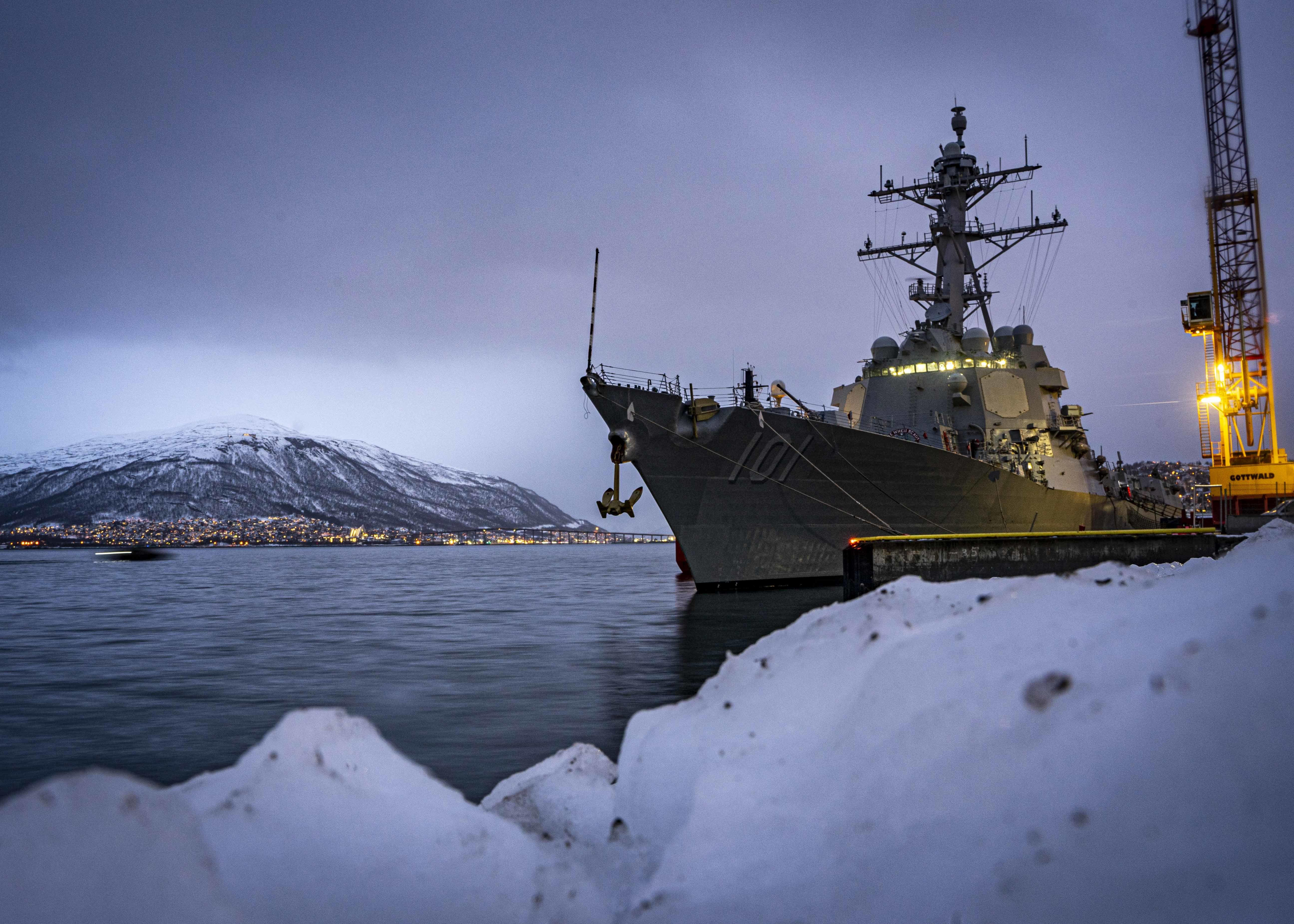
Vice Adm. Andrew Lewis, who leads both organizations, said JFC Norfolk and 2nd Fleet are “natural partners” in bringing together allies on both sides of the Atlantic.
“We will seek to develop an innovative and collaborative effort between the two commands. Colocation in the same building, alignment of battle rhythms and staff integration where possible are just some of the things which will enable us to do more for the mission, whether it’s the one given to 2nd Fleet by U.S. leadership or the one given to Joint Force Command Norfolk by the 29 allies in NATO,” Lewis said Tuesday at an event co-hosted by the Center for Strategic and International Studies and the U.S. Naval Institute.
Lewis said during the event that his JFC Norfolk staff has been manned in such a way to take advantage of the best expertise NATO has to offer: his deputy commander is British, his chief of staff billet will alternate between a German and a Spanish officer, the operations officer is Norwegian, the plans officer is French and the support officer is Danish.
“There’s no mystery to the command network, it was designed that way for a reason. The ops and plans for [anti-submarine warfare], regionally and capability-wise, the Norwegian and the French. And the Brit deputy commander – no accident,” he said.
When crafting his 2nd Fleet staff, he also wanted to promote integration with allies and partners. His deputy commander is a one-star U.S. admiral but the vice commander is a two-star Canadian officer, he noted, to solidify the collaboration of forces on this side of the Atlantic.
Four other foreign officers are also in high-ranking positions in the 2nd Fleet staff to tie together the two sides of the Atlantic.
“They are in leadership positions at the senior-most level. They are our planners, our logisticians and our operators. Having perspectives from other nations is invaluable and provides immeasurable insight and expertise,” Lewis said.

Speaking to reporters after the event, Lewis foot stomped the importance of working with allies and partners, both to learn from each others’ niche capabilities and to create more capacity to tackle the many security challenges around the globe.
“Our allies and partners are incredibly capable. In BALTOPS (2019) there were 16 nations represented, 14 of which were in NATO. Sweden and Finland were not. If you get in a fight, you want the Swedes and Finns on your side. And you want the Danes on your side. These people – this whole Viking thing is for real,” he joked.
Aside from exercises, he said the French and now the British navies have aircraft carriers that can supplement the U.S. Navy carriers to operate globally.
“Having that global carrier force is really beneficial, and that helps our operational dilemma quite a bit,” he said.
As for the Royal Navy, whose first aircraft carrier since 2014 is working up for an eventual deployment that will include U.S. Marine Corps F-35B Joint Strike Fighters in the air wing, Lewis said, “(HMS) Queen Elizabeth is a pretty nifty ship because it was built, it was basically designed around the F-35.”
“The Brits have got a long way to go on carrier strike group operations, because that’s a game they’ve been out of for a long time. The French are very competent in carrier strike group (operations),” he noted.
Ultimately, he said, it’s important to have other allies with high-end capabilities such as carrier strike groups so that they can not only work alongside the U.S. but in some cases replace a U.S. carrier strike group or otherwise split the workload in a plug-and-play fashion “where they can take mission where we don’t have the capacity of assets, and they can fill in the gap. That’s something we’re trying to focus on right now.”
To achieve that, “my big mantra is integration, not interoperability. Interoperability is the cost of doing business; if you can’t operate together, you can’t do anything. We’ve got to be able to integrate the force.”





